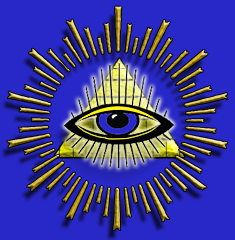


|









|

|

|

|

|

|

|
One of the oldest Masonic documents is the Regius Manuscript written about 1390 AD. At this time all masons were operatives, that is, they were workers engaged in constructing important buildings in stone. There were many kinds of masons such as hewers, layers, and setters, but evidence indicates that those who were called freemasons were builders of a superior type.It was these freemasons who, under the control of a Master Mason, supervised and erected the great cathedrals and other marvelous structures in the Gothic style of architecture throughout Europe and Britain in the Middle Ages. The operative masons not only cut and dressed the stones in the quarries, but constructed the walls, set the pillars and arches, laid the floors, and carved the decorations. They were also responsible for the beautiful artwork, and the creation of the sculptures. The freemasons were the artists of their age, and were organizers of labour on a grand scale. Many of their great Gothic works survive to this day. The hierarchy of the trades or crafts was very strict. In mediaeval times, masonry was one of the highest skilled trades available. Its training took many years to complete, and its skills were jealously guarded by its members. To join this exclusive band, a boy, sound in body, keen of mind, and of good reputation, was accepted at an age between ten and fifteen years and apprenticed to a skilled mason for a period of seven to ten years. The mason taught the apprentice both the theory and practice of the craft. After the boy had served a probationary period, and shown evidence of his fitness, his name was entered into the books of the Lodge, after which he was generally called an Entered Apprentice. He thus received a thorough grounding in moral duties, in the practice of charity, and in his duties toward his master and his fellow employees. At the end of his apprenticeship, the youth was required to submit to an exacting test of his proficiency, including his work skills and his responsibilities. His conduct was reported upon, and he was finally set to prove his skills by producing a special example, sometimes called a master's piece. Having successfully passed these tests, he then stood as an equal in duties, rights and privileges with the other masons, and was called a Fellow of the Craft. To all intents, he had now mastered the theories, practices, strict rules of conduct, and the secrets and tools of his trade. When a number of Freemasons worked together on one of the great buildings of the Middle Ages they organized themselves into a Lodge to enable them to properly control and organize the work to be accomplished. This lodge was governed by an expert mason, called the Master Mason. On larger structures, he would be assisted by others, called Wardens. The lodge would have its equivalent of a secretary to keep the books, and a treasurer to keep and disburse the lodge funds. It also had a charity chest, containing monies contributed by the masons to dispense relief to members in sickness, accident or distress, and to assist widows and orphans of deceased members suffering difficult times. The lodge meets regularly, to record apprentices in its books and to admit fellows. Both of these acts were done in a ceremonial fashion, called initiation. |